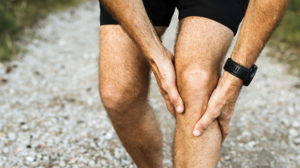QC KinetixProvo Summary
 Joint pain is an uncomfortable condition caused by damaged cartilage, bone, or ligaments, tendons, or muscles. It can range from mild discomfort that develops after physical activity to a severe pain that limits movement and makes everyday tasks difficult. Finding the right joint pain treatment is essential for a variety of reasons. Click here for more QC Kinetix (Provo) back pain treatment
Joint pain is an uncomfortable condition caused by damaged cartilage, bone, or ligaments, tendons, or muscles. It can range from mild discomfort that develops after physical activity to a severe pain that limits movement and makes everyday tasks difficult. Finding the right joint pain treatment is essential for a variety of reasons. Click here for more QC Kinetix (Provo) back pain treatment
Treatment options vary, from over-the-counter NSAIDs such as ibuprofen to stronger opioid drugs. NSAIDs are effective for mild to moderate joint pain. Other options include physical therapy, hot and cold therapy, and electrical nerve stimulation. Corticosteroid injections can be given to reduce inflammation and reduce pain in arthritic joints.
Joint pain is a common symptom for many people and can be caused by traumatic injuries, infections, and autoimmune diseases. In severe cases, joint pain can even be a symptom of a malignant tumor. It is important to seek treatment for joint pain as soon as possible to avoid the risk of further damage. Some of the causes of joint pain can be fatal if not treated properly. In addition to medications, lifestyle changes, and exercise can help with joint pain treatment.
Other common treatment options for joint pain include rest, hot and cold therapy, or surgery. Physical therapy can reduce inflammation and restore strength to the affected joints. However, surgery should be your last resort. Consult with a doctor who is experienced in joint pain treatments and has extensive training and expertise. Once you know what’s best for your condition, you can choose the best treatment for your condition.
Your GP can help you find the right joint pain treatment. He or she can also signpost you to appropriate support services. The Arthritis helpline can offer emotional support to people suffering from arthritis. Depending on where you live, you may qualify for financial assistance. Occupational therapy can also help you continue with your job, though physical tasks may require you to change your working environment.
During a physical exam, a doctor will ask about the type of joint pain you’re experiencing. A detailed medical history helps the physician narrow the list of possible causes. He will also perform x-rays and blood tests to evaluate the severity of joint damage. If necessary, your doctor may recommend MRIs, ultrasounds, or other tests to better diagnose the condition. In extreme cases, he or she may recommend keyhole surgery to fix your joint.
Physical therapy is another popular joint pain treatment option. Physical therapy involves a variety of strengthening exercises and stretching to restore range of motion and reduce pain. For people who suffer from knee pain, physical therapy may recommend a knee brace to increase stability and function. Home remedies for joint pain can also be effective. Alternating hot and cold treatments can help reduce joint stiffness. Applying ice packs on your joints can also help reduce swelling.
Over-the-counter medications can help relieve minor joint pain. However, they also can cause side effects such as liver damage and other complications. Using cold or hot therapy to reduce inflammation can also reduce joint pain.
